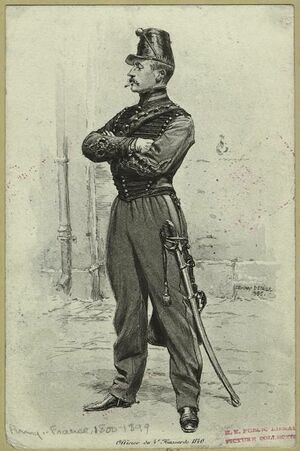First Fratricide
The Kingdom of Dericania's political establishment's decision to pass a series of laws calling for the secularization and mediatization of several ecclesiastical realms in the Kingdom, known as le Crise della Dix, was the final straw for the Bergendii people. This event starkly highlighted the Kingdom's dismissive attitude towards Bergendii cultural and national identity, perpetuating a system of institutionalized inequality. As a result, the Bergendii people , primarily concentrated in Maritime Dericania, felt compelled to seek independence and self-determination, leading to the creation of a Bergendii ethno-state, Burgundie. The subsequent outbreak of the First Fratricide was a direct consequence of the the Kingdom's failure to address the deep-seated cultural tensions and political disillusionment of the Bergendii, making national independence the only viable solution to resolve the crisis.
| First Fratricide | |||||||
|---|---|---|---|---|---|---|---|
| Part of Fraternal Wars | |||||||
 This about sums Burgundie's position up | |||||||
| |||||||
| Belligerents | |||||||
|
1869-1875 |
1856-1875 | ||||||
Background
The hundreds of principalities of the Kingdom of Dericania had long been supremely individualistic throughout the history of the Holy Levantine Empire. With the outbreak of the Third Caroline War in 1843 it was increasingly clear that the princelings needed to define themselves collectively and specify what Deric means so as to safeguard against further incursions from the Kingdoms of Urcea and Fiannria. Disparate nationalist thinkers were brought together to come up with a unifying concept on the culture. The academics from the "interior" or "northern" parts of the Kingdom had much in common and started to build an identify. Those of "coastal" or "southern" principalities felt their history and cultural idioms were being steamrolled. The cultural concepts they espoused were foreign to the rest. It was much more tied to "foreign" influence, especially those of the Istroyan and Audonian cultures. Beyond that, the interior principalities were, on average, much poorer and agrarian than those on the coast. They had a far more isolationist attitude and still resented the coastal states for, in some cases, ignoring calls to the "southern crusades" in favor of personal gain in northern Levantia, specifically Faneria and Yonderre.
Burgundie and the Bergendii flexing their muscle in the court of the Kingdom of Dericania (economically, culturally)
Le Crise della Dix
Following the cession of the Transionia region to Urcea at the conclusion of the Third Caroline War, ten Imperial Princes - most notably the Margrave of Carsula - were dispossessed of their land. The Imperial Diet - dominated by Derian members especially given the Recess of the Julii - decided to pass a series of laws calling for secularization and mediatization of several ecclesiastical realms in the Kingdom of Dericania in order to compensate the ten dispossessed Princes. The Imperial Diet formed a Commission on Compensation, which reported ten potential rearranged and secularized territories for the dispossessed Princes. Critically, all ten new realms were all in territory primarily made up of Bergendii people, and included fifteen Bishoprics, four Free Monastic Communities, and two Free Cities. While Bergendii representatives were initially supportive, it became evident that the Derian majority within the Diet - supported by the Emperor of the Levantines - would compensate Derian loss with Bergendii loss, beginning what was known as Le Crise della Dix, the Crisis of the Ten, a major diplomatic and political crisis between Derians and Bergendii within the context of the Holy Levantine Empire.
Bourgondii-Estian War
1849-1851 In 1849, the Duchy of Bourgondi invaded the County Palatine of Estia to quell a workers strike and revolution that was threatening to overthrow the Count Palatine. Bourgondi quickly puts down the rebellion but instead of handing it back to the Count, they occupy the county. The Duchy of Marialianus joins the side of the Count and counter-invades to push Bourgondi out. After a year of fighting the Bourgondii defeat the troops of the Duchy of Marialianus and Bourgondi annexes Estia.
Overland War
Bourgondi is fighting Marialianus to the east and Pumbria to the west while trying to establish a presence in the County Palatine of Estia, which they annexed.
Burgundie-Faramount Union
The Burgundie-Faramount Union is huge for Pau II because it keeps Faramount out of the war, as they refuse to fight, but the tax revenue allows him to continue to fight.